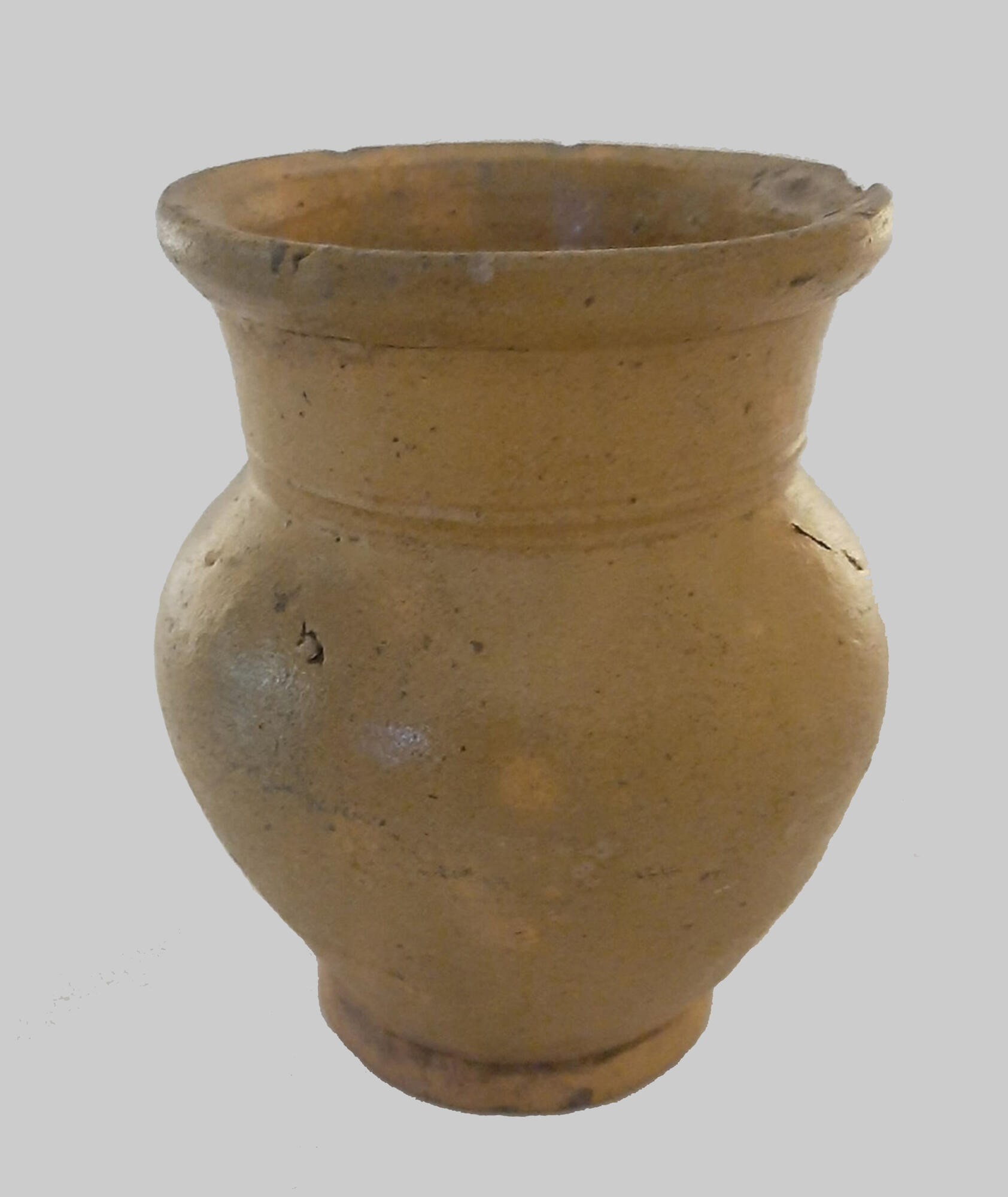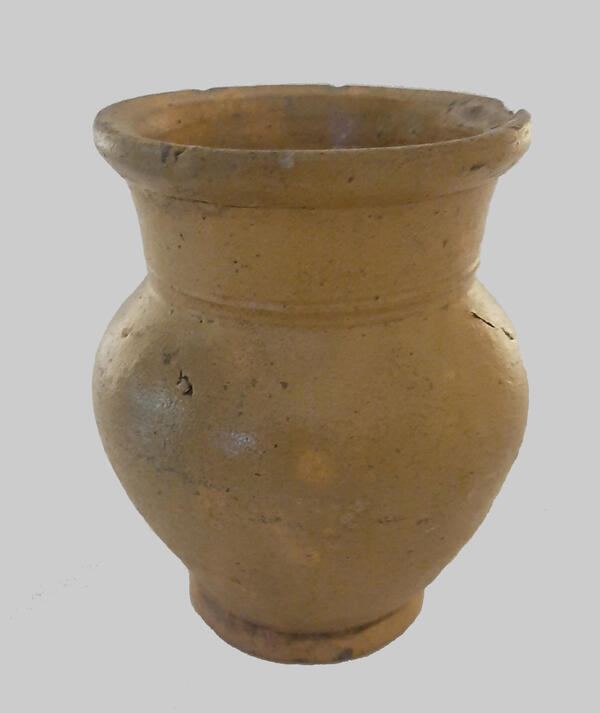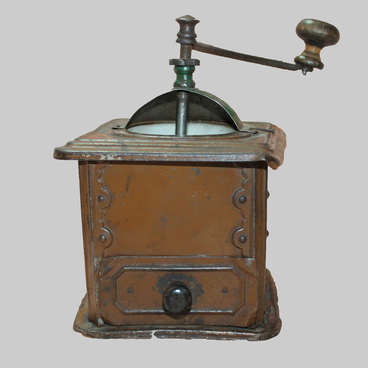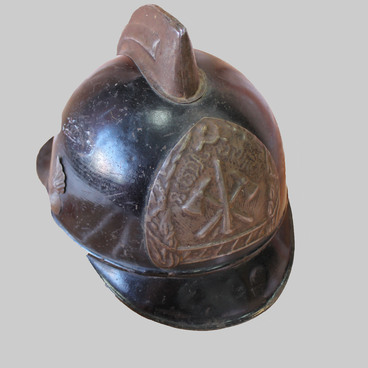The milk jug from the collection of the Local History Museum of Kopeysk City District is a vessel in the form of an elongated clay pot expanding downwards. It looks like a wide earthenware jug without a handle or lid. The milk jug is covered with an ocher glaze.
The word ‘krinka’, or ‘krynka’, has a Slavic origin. It was used to refer to a vessel, bowl, tub, trough, and measure for the contents of such vessel. Both variants, i.e. ‘krinka’ and ‘krynka’, are valid.
The specific shape of the milk jug is not accidental. The direct purpose of this vessel is to store milk and yogurt. If you leave the fresh milk for a while, it will be divided into fractions, i.e. on milk and cream. Cream is more valuable and accumulates on top just at the point of narrowing of the milk jug. This makes them easy to collect. Milk in such a vessel kept its freshness longer, and when sour, it gave a thick layer of sour cream, which was convenient to remove with a spoon.
In the milk jug, milk was not only stored and served on the table, but also heated in the oven. It was in this dish that the milk was heated without burning. It acquired a beige or slightly brown hue, and a dark brown, very tasty foam was formed on top flavored and softened with a lower layer of cream.
Milk jugs were known both in Ancient Rus and in other countries.
In the past, no village was complete without milk jugs. A typical detail of the Southern Russian rural landscape of the 19th - 20th centuries is the milk jugs hanging for drying on fence stakes. The vessels were 1-2 liters in volume with thick walls and a thickened upper edge. They were made without ornament, and sometimes they were glazed in the upper narrower part. The shape of the neck, its diameter, and height were designed so that the milk jug could be wrapped around the hand. At the same time, the neck had to be wide enough for a hand to enter and wash the vessel.
Female and male milk jugs were distinguished. When a woman came to the market to buy a milk jug, she first took it in her hand for a narrow place. Thus, she checked whether she could hold the vessel with one hand. Then she put her other hand inside. The milk jug considered suitable if the hand passed. Men’s milk jugs had a second name, i.e. “bachelor”. The neck of such a milk jug was very wide to fit a man’s hand.
The word ‘krinka’, or ‘krynka’, has a Slavic origin. It was used to refer to a vessel, bowl, tub, trough, and measure for the contents of such vessel. Both variants, i.e. ‘krinka’ and ‘krynka’, are valid.
The specific shape of the milk jug is not accidental. The direct purpose of this vessel is to store milk and yogurt. If you leave the fresh milk for a while, it will be divided into fractions, i.e. on milk and cream. Cream is more valuable and accumulates on top just at the point of narrowing of the milk jug. This makes them easy to collect. Milk in such a vessel kept its freshness longer, and when sour, it gave a thick layer of sour cream, which was convenient to remove with a spoon.
In the milk jug, milk was not only stored and served on the table, but also heated in the oven. It was in this dish that the milk was heated without burning. It acquired a beige or slightly brown hue, and a dark brown, very tasty foam was formed on top flavored and softened with a lower layer of cream.
Milk jugs were known both in Ancient Rus and in other countries.
In the past, no village was complete without milk jugs. A typical detail of the Southern Russian rural landscape of the 19th - 20th centuries is the milk jugs hanging for drying on fence stakes. The vessels were 1-2 liters in volume with thick walls and a thickened upper edge. They were made without ornament, and sometimes they were glazed in the upper narrower part. The shape of the neck, its diameter, and height were designed so that the milk jug could be wrapped around the hand. At the same time, the neck had to be wide enough for a hand to enter and wash the vessel.
Female and male milk jugs were distinguished. When a woman came to the market to buy a milk jug, she first took it in her hand for a narrow place. Thus, she checked whether she could hold the vessel with one hand. Then she put her other hand inside. The milk jug considered suitable if the hand passed. Men’s milk jugs had a second name, i.e. “bachelor”. The neck of such a milk jug was very wide to fit a man’s hand.



